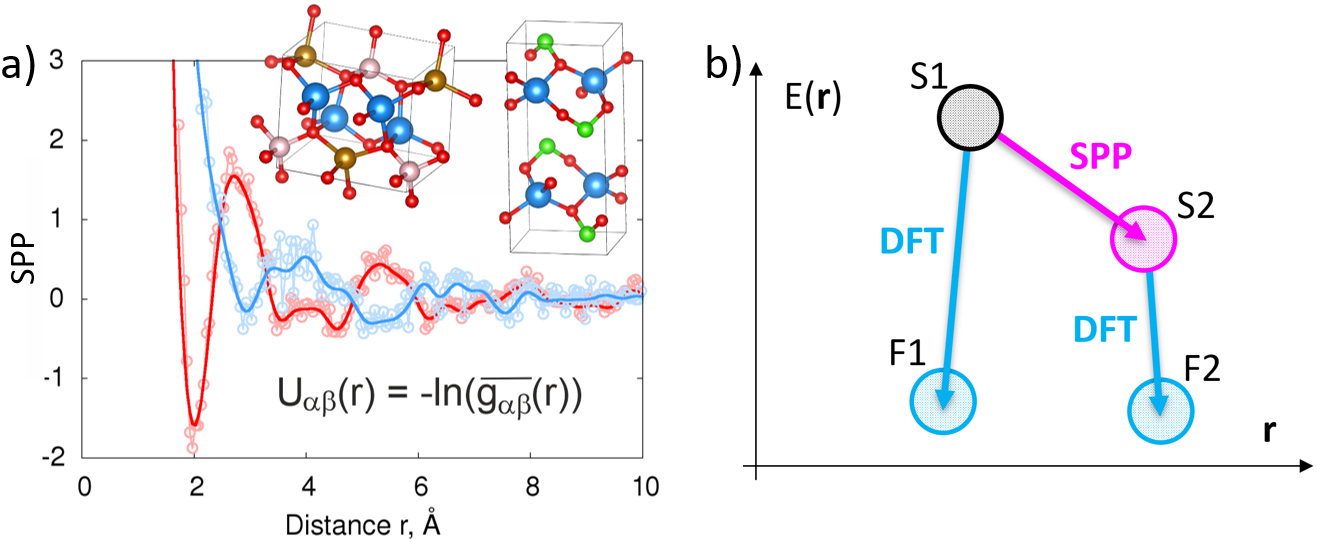Poster #P57
Statistically derived proxy potentials accelerate geometry optimization of crystal structures
The crystal structures of known materials contain the information about the interatomic interactions that produced these stable compounds. Similar to the use of reported protein structures to extract effective interactions between amino acids, that has been a useful tool in protein structure prediction, we demonstrate how to use this statistical paradigm to learn the effective inter-atomic interactions in crystalline inorganic solids. By analyzing the reported crystallographic data for inorganic materials, we have constructed statistically derived proxy potentials (SPPs) (Fig. 1a) that can be used to assess how realistic or unusual a computer-generated structure is compared to the reported experimental structures. The SPPs can be directly used for structure optimization to improve this similarity metric, that we refer to as the SPP score. We apply such optimization step to markedly improve the quality of the input crystal structures for DFT calculations (Fig. 1b) and demonstrate that the SPPs accelerate geometry optimization for three systems relevant to battery materials.[1] As this approach is chemistry-agnostic and can be used at scale, we produced a database of all possible pair potentials in a tabulated form ready to use.

Figure 1. a) an example of the Li-O and Li-Li statistical proxy potentials (SPPs) produced by analysing experimental structures reported in ICSD; b) schematics of a two-step optimization approach in which SPP optimization is followed by DFT vs a one-step DFT optimisation.
- D. Antypov et. al., ChemPhysChem 2024, 10.1002/cphc.202400254.
Dmytro Antypov
- University of Liverpool, Leverhulme Research Centre for Functional Materials Design
- University of Liverpool, Department of Chemistry